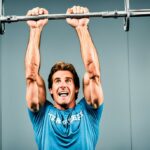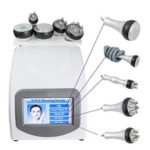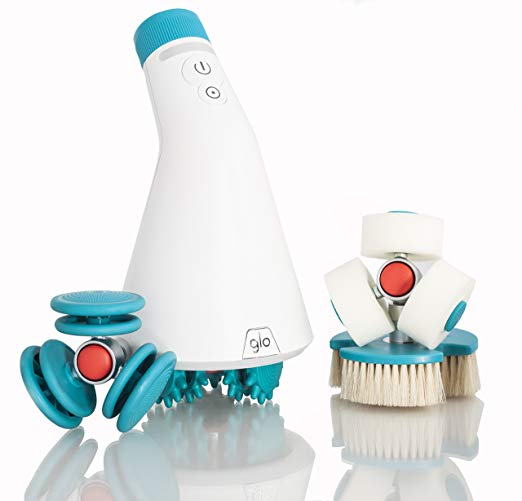Last Updated on 3 months by Francis
The barbell thruster is a powerful exercise that combines a front squat with an overhead press. It targets multiple muscle groups and offers a range of benefits, including improved strength, mobility, and endurance. To maximize the effectiveness of this exercise, it is important to master the proper technique. In this article, we will explore the benefits of the barbell thruster and provide you with valuable tips and techniques to help you optimize your performance and achieve your fitness goals.
Contents
Key Takeaways:
- The barbell thruster is a popular exercise in CrossFit that combines a front squat with an overhead press.
- It targets multiple muscle groups and helps develop strength, mobility, and endurance.
- Incorporating thrusters into your workout routine can improve overall strength, endurance, and body composition.
- Mastering the proper technique is crucial for maximizing the benefits of the barbell thruster.
- Avoiding common mistakes and implementing modifications can enhance your thruster performance.
Why Incorporate Thrusters into Your Workout Routine

Thrusters are a highly effective exercise that offer numerous benefits for your overall fitness. By incorporating thrusters into your workout routine, you can improve strength, endurance, and body composition. Let’s explore the specific reasons why thrusters should be a staple in your training regimen.
The Benefits of Thrusters
Thrusters require hip and ankle mobility, good thoracic spine mobility, and shoulder mobility, making them an excellent exercise for improving overall flexibility and range of motion. They engage multiple muscle groups simultaneously, including the core, legs, and overhead muscles, making them an efficient and time-saving movement. The combination of mobility and strength involved in thrusters helps to enhance functional fitness and athletic performance.
- Targeted Muscle Groups: The barbell thruster engages major muscle groups such as quadriceps, glutes, hamstrings, shoulders, and triceps, leading to increased muscle development and overall strength.
- Cardiovascular Endurance: Due to their intensity and full-body engagement, thrusters provide a cardio workout that can boost your heart rate and improve cardiovascular health.
- Time-Efficient: Thrusters are a compound exercise that targets multiple muscles simultaneously, making them a time-efficient addition to any workout routine.
- Functional Fitness: Thrusters mimic movements used in daily activities and sports, improving your ability to perform everyday tasks and excel in athletic endeavors.
- Body Composition: The combination of strength training and cardiovascular benefits from thrusters can help you build lean muscle mass and burn calories, leading to improved body composition.
Incorporating thrusters into your workout routine can not only enhance your physical performance but also provide a variety of mental and emotional benefits. The sense of accomplishment and the endorphin release from completing a challenging set of thrusters can boost mood and overall well-being.
“Thrusters are a highly effective exercise that targets multiple muscle groups and improves strength, endurance, and body composition.”
Whether you are a beginner or an experienced fitness enthusiast, including thrusters in your workout routine can help take your fitness journey to the next level. The versatility and efficacy of thrusters make them suitable for individuals of various fitness levels.
Stay tuned as we dive deeper into the techniques and proper form required for mastering the barbell thruster in the upcoming sections.
| Key Benefits of Thrusters | Achieved Through |
|---|---|
| Increased muscle development | Engaging major muscle groups |
| Improved cardiovascular endurance | Intense full-body workout |
| Efficient use of time | Compound movement targeting multiple muscles |
| Enhanced functional fitness | Mimicking everyday movements and sports |
| Improved body composition | Combining strength training and cardio benefits |
Now that you understand the benefits of incorporating thrusters into your workout routine, let’s move on to the next section to learn about the proper technique for performing thrusters.
Understanding the Proper Technique for Thrusters
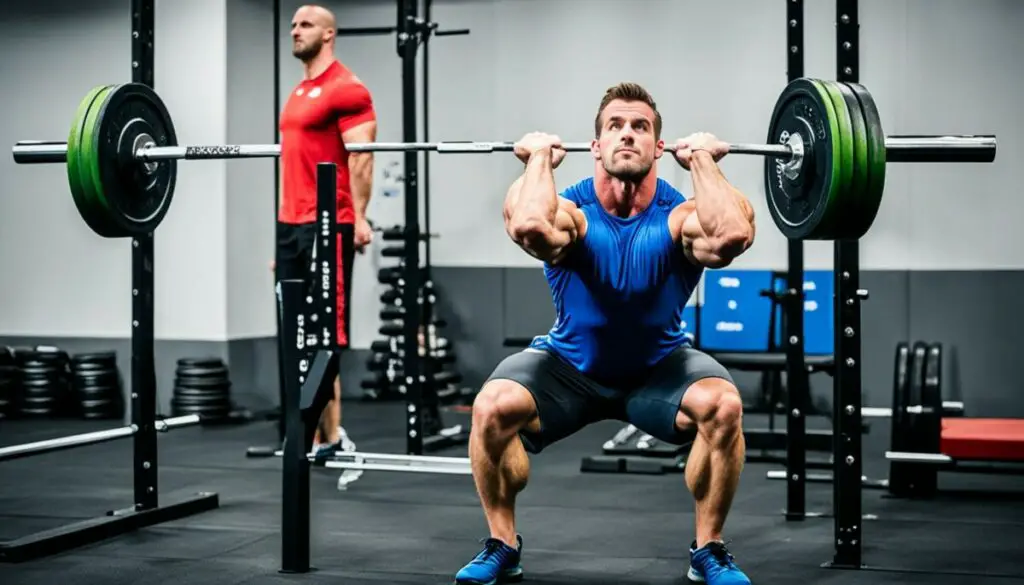
Mastering the proper technique is essential to perform barbell thrusters effectively. This compound exercise consists of three key parts: starting with the bar on your shoulders, squatting below parallel, and ending with the bar locked out overhead.
To achieve optimal form, it is crucial to focus on the following elements:
- Bar Placement and Rack Position: Ensure the bar rests comfortably on your shoulders, supporting it with your hands while keeping your elbows up. This position helps maintain stability and control throughout the entire movement.
- Squat Depth: Squatting below parallel means lowering your hips as if sitting into a chair until your thighs are parallel to the ground. This range of motion engages your lower body and targets the muscles effectively.
- Explosive Movement: Thrusters require power and explosiveness. Drive through your heels and engage your legs to generate upward momentum, ensuring a smooth and explosive ascent from the squat position.
- Breathing Technique: Implement proper breathing techniques by inhaling deeply during the descent and exhaling forcefully as you press the bar overhead. This helps stabilize your core and maintain control throughout the movement.
- Full Lockout: At the top of the movement, fully extend your arms overhead, locking out your elbows. This completes the range of motion and maximizes the benefits of the exercise.
By mastering these key elements, you can execute barbell thrusters with precision and efficiency, optimizing your results and reducing the risk of injury. Practice proper technique consistently to improve your form and reap the rewards of this challenging and rewarding exercise.
Quote:
“Proper technique is the foundation for mastering the barbell thruster. Focus on each element of the movement and strive for accuracy and efficiency.” – Coach Sarah
| Common Mistakes to Avoid | Tips for Correcting |
|---|---|
| 1. Holding the bar away from the shoulders | – Ensure the bar rests on the shoulders and maintain a proper rack position. |
| 2. Dropping the elbows during the squat | – Keep your elbows up to maintain stability and support the bar. |
| 3. Resting the bar on the fingertips | – Grip the bar so that it is centered in your hands for better control. |
| 4. Using a narrow stance or excessively wide hand placement | – Find a comfortable stance and hand position that allows for proper movement and balance. |
| 5. Failing to utilize the legs to generate power | – Engage your leg muscles to drive the movement and maximize power output. |
| 6. Neglecting proper breathing technique | – Practice synchronized breathing to maintain stability and control throughout the exercise. |
| 7. Not achieving a full lockout overhead | – Fully extend your arms, locking out your elbows at the top of the movement. |
Common Mistakes to Avoid When Performing Thrusters
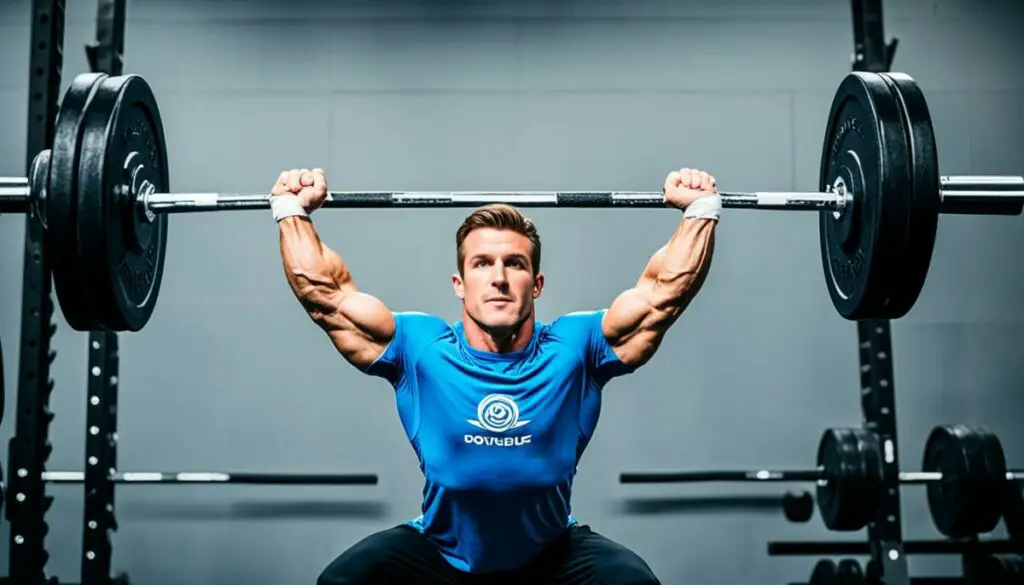
When performing barbell thrusters, it’s important to be aware of common mistakes that can hinder your technique and diminish the effectiveness of the exercise. By avoiding these mistakes and making necessary corrections, you can greatly improve your barbell thruster performance.
1. Bad Rack Position
A common mistake is having a bad rack position, which can negatively impact your barbell thruster form. This includes holding the bar away from your shoulders, dropping the elbows, or resting the bar on your fingertips. Maintaining a good rack position is crucial for stability and proper execution of the exercise.
| Mistake | Correction |
|---|---|
| Holding the bar away from the shoulders | Ensure the bar rests on the front of your shoulders, with your elbows up and in line with your torso. |
| Dropping the elbows | Keep your elbows up throughout the movement to support the weight and maintain a proper rack position. |
| Resting the bar on the fingertips | Grip the bar with your hands, positioning it securely in the center of your palms for stability. |
2. Bad Stance
An improper stance can also compromise your barbell thruster form. This includes standing with narrow feet or placing your hands too wide apart. To optimize your performance and prevent unnecessary strain, it’s important to maintain a balanced and comfortable stance.
Remember to:
- Position your feet shoulder-width apart for stability and balance.
- Place your hands just outside shoulder-width for optimal control and support.
3. Not Utilizing the Legs Properly
The barbell thruster is a compound exercise that engages multiple muscle groups, with the legs playing a significant role in generating power. Failing to utilize the legs properly can diminish the effectiveness of the exercise and put excess strain on other muscle groups.
Key tips for utilizing your legs efficiently:
- Initiate the movement with a deep squat, ensuring your thighs are parallel or below parallel.
- Drive through your heels and engage your quadriceps and glutes to powerfully lift the weight overhead.
4. Not Breathing Properly
Proper breathing is essential during barbell thrusters to optimize performance and maintain stability. A common mistake is holding your breath or breathing in an uncoordinated manner.
Remember to:
- Inhale deeply before initiating the movement to brace your core and stabilize your torso.
- Exhale forcefully as you drive through your legs and press the weight overhead.
5. Lazy Lockout
Completing a full lockout at the top of the movement is crucial for maximizing the benefits of barbell thrusters. Failing to fully extend your arms overhead creates a weak lockout and hinders the effectiveness of the exercise.
Key tips for achieving a strong lockout:
- Extend your arms fully and lock them out overhead, with the barbell directly over your midline.
- Keep your shoulders stable and engaged throughout the movement.
By avoiding these common mistakes and focusing on proper technique and form, you can enhance your barbell thruster performance, optimize the benefits of the exercise, and reduce the risk of injury.
Modifications for Better Thruster Performance
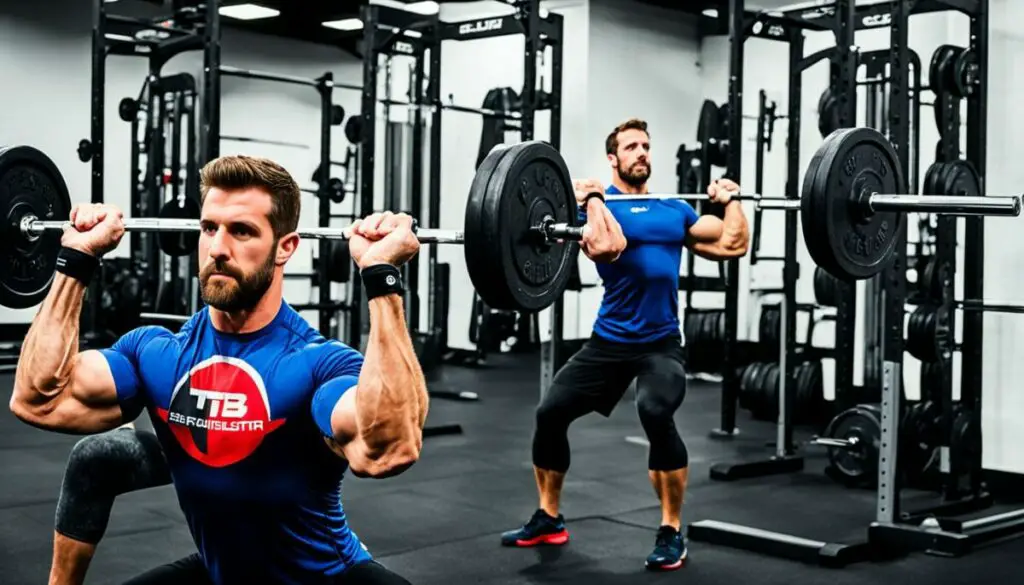
If you are not yet able to meet the movement standards or are struggling with the common mistakes mentioned earlier, there are modifications that can help improve your thruster performance.
Scaling the weight by using lighter loads can increase your range of motion and efficiency. By reducing the weight on the bar, you can focus on mastering the technique and gradually build up to heavier loads.
Scaling the range of motion is another effective modification. Instead of squatting all the way below parallel, which may be challenging for some, squat to a depth that is comfortable for you. This allows you to work on your form and gradually increase your range of motion over time.
In addition to weight and range of motion modifications, it’s important to focus on other aspects of the exercise that can enhance your thruster performance. Pay attention to:
- Stability: Prioritize stability throughout the exercise by maintaining a strong core and engaging the muscles of your feet, legs, and hips for a solid foundation.
- Proper rack positioning: Ensure the bar is resting comfortably on your shoulders with your elbows up. This will allow for a smoother transition between the squat and overhead press.
- Bar path: Aim to maintain a straight and efficient bar path throughout the movement. Visualize a straight line off to the side of you and keep the ends of the bar aligned with that line.
By incorporating these modifications and focusing on stability, proper rack positioning, and bar path, you can improve your thruster performance and gradually work towards mastering this challenging exercise.
| Modification | Description |
|---|---|
| Scaling the weight | Reduce the weight on the bar to increase range of motion and improve technique. |
| Scaling the range of motion | Squat to a depth that is comfortable for you, gradually increasing your range of motion over time. |
| Focus on stability | Engage core and lower body muscles to maintain stability throughout the exercise. |
| Proper rack positioning | Ensure the bar is resting on your shoulders with elbows up for a smooth transition between squat and overhead press. |
| Straight bar path | Maintain a straight and efficient bar path to optimize performance and minimize unnecessary movements. |
Stability Through the Feet for Efficient Thrusters
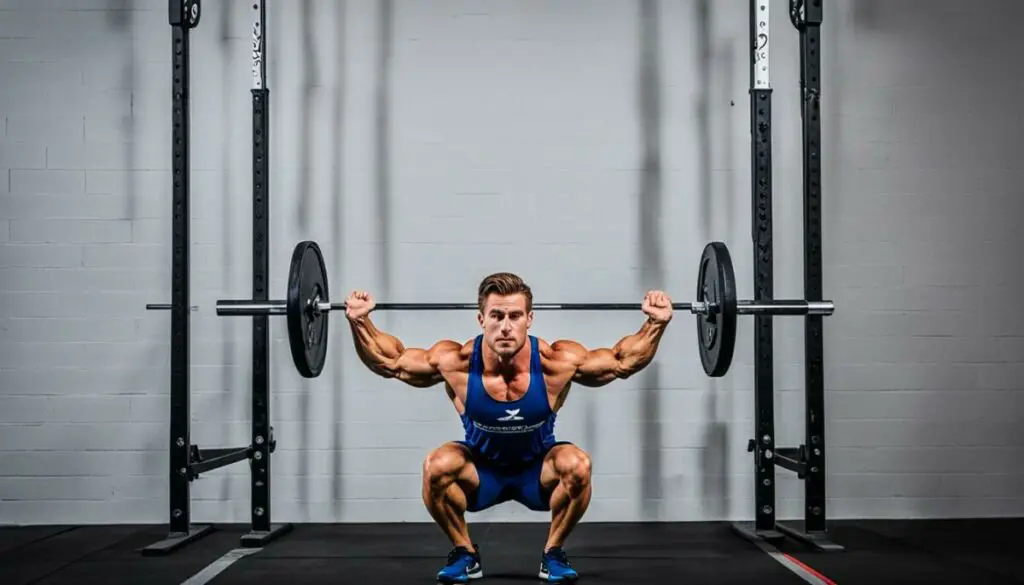
Achieving stability through the feet is crucial for efficient barbell thrusters. By focusing on proper foot placement and weight distribution, you can prevent being pulled forward onto your toes and maintain balance throughout the exercise.
When performing barbell thrusters, it is recommended to place your feet in the same position as your back squat and front squat movements. This is because your body is strongest and most stable in this stance.
To ensure stability and prevent forward leaning, it is important to keep balance through the whole foot, with a slight emphasis on the back of the foot. By distributing your weight evenly, you can maintain proper form and maximize the effectiveness of the exercise.
Remember, stability through the feet is the foundation for efficient thrusters. By mastering this aspect of the exercise, you set yourself up for success and improved performance.
Stability through the feet is essential for efficient barbell thrusters.
Proper Rack Positioning for Flawless Thrusters
Finding the proper rack position is essential for flawless thrusters. When performing this exercise, there are two common mistakes you should avoid. Placing the bar too far back on the fingertips can compromise your grip and stability, while keeping it all the way in the hands can hinder proper movement mechanics.
Instead, aim for a balanced position in the center of the hand. This allows for optimal squatting and pressing motions, ensuring efficient execution of the thruster. During the squat portion of the exercise, keep your elbows slightly up to maintain a strong rack position. As you transition into the press, shift the bar more into the hands to facilitate smooth and controlled movement overhead.
Keeping the hands relaxed throughout the movement can assist with seamless transitions between the squat and press phases, allowing for a continuous and fluid motion. Maintaining a stable and comfortable rack position will not only enhance your performance but also reduce the risk of injury.
Benefits of Proper Rack Positioning
Proper rack positioning in thrusters offers several key benefits:
- Improved stability: With the bar centered in the hands, you can maintain better balance and control throughout the movement.
- Enhanced bar path: By finding the optimal position, you can execute a more efficient bar path, minimizing unnecessary movement and increasing efficiency.
- Reduced strain on wrists and hands: Placing the bar in a balanced position helps distribute the load evenly, reducing strain on your wrists and hands.
- Increased power output: A solid rack position allows for better transfer of force from the lower body to the upper body, maximizing power output during the thruster exercise.
By focusing on finding the correct rack position, you can perform flawless thrusters with improved form, efficiency, and overall effectiveness.
Mastering the Efficient Bar Path in Thrusters
A straight and efficient bar path is crucial for mastering the barbell thruster technique and form. Keeping the movement fluid and preventing injury requires avoiding any unnecessary looping of the bar around your face. To maintain an optimal bar path, visualize a straight line off to the side of you, and consciously align the ends of the bar with that line throughout the entire movement. By minimizing any unnecessary bar movement and staying on the most efficient path, you can execute quicker and more fluid thrusters.
Visually aligning the bar with a straight line during thrusters helps you maintain control and stability in the exercise. It also ensures that the bar moves in a steady, linear motion without unnecessary deviations. This not only enhances your performance but also reduces the risk of strain or injury.
By focusing on maintaining an efficient bar path, you can optimize the benefits of the barbell thruster exercise. It allows for a smoother transition from the squat to the press phase of the movement. Additionally, an efficient bar path minimizes wasted energy and helps you maintain a steady rhythm throughout the exercise.
Conclusion
The barbell thruster is a challenging and highly effective exercise that targets multiple muscle groups to improve strength, endurance, and body composition. By mastering the proper technique, avoiding common mistakes, and implementing helpful modifications, you can unlock the full potential of the barbell thruster and maximize its benefits.
One of the key factors in performing a barbell thruster correctly is stability through the feet. Proper foot placement and weight distribution will prevent you from leaning forward onto your toes and help you maintain balance throughout the movement. Prioritizing stability will also ensure that you can effectively transfer power from your legs to the upper body, allowing for a more powerful and efficient thruster.
Another crucial aspect of the barbell thruster is maintaining a proper rack position. Placing the bar in the center of your hand, with the elbows slightly up, enables you to smoothly transition from the squat to the press phase. Keeping your hands relaxed during the movement will facilitate a seamless transition and enhance your overall performance.
To execute the barbell thruster with precision, it’s essential to follow an efficient bar path. Minimize unnecessary movement by visualizing a straight line to the side of you and keeping the ends of the bar aligned with that line throughout the exercise. By staying on the most efficient path, you’ll be able to perform quicker and more fluid thrusters.
Incorporating barbell thrusters into your workout routine can yield significant results. With proper technique, attention to stability, rack positioning, and bar path, you can strengthen multiple muscle groups, improve your overall fitness, and achieve the desired body composition. So, lace up your shoes, grab a barbell, and start reaping the benefits of this powerful exercise today!
FAQ
What are the benefits of incorporating thrusters into my workout routine?
Thrusters are a highly effective exercise that can improve overall strength, endurance, and body composition. They engage multiple muscle groups, require mobility and strength, and can provide a cardio workout due to their intensity.
How do I perform a barbell thruster with proper technique?
The proper technique for a barbell thruster involves starting with the bar on your shoulders, squatting below parallel, and ending with the bar locked out overhead. It is important to maintain a good rack position, perform a squat below parallel, and use proper breathing techniques.
What are some common mistakes to avoid when performing thrusters?
Common mistakes to avoid include having a bad rack position, such as holding the bar away from the shoulders or dropping the elbows, having a bad stance with narrow feet or hands placed too wide apart, and not utilizing the legs properly or breathing properly.
Are there any modifications I can make to improve my thruster performance?
Yes, there are modifications that can help. These include scaling the weight by using lighter loads, scaling the range of motion by squatting to a depth that is comfortable for you, and focusing on stability, proper rack positioning, and bar path.
How can I achieve stability through the feet for efficient thrusters?
Placing your feet in the same position as your back squat and front squat movements, with a slight emphasis on the back of the foot, can help achieve stability. Proper foot placement and weight distribution can prevent being pulled forward onto your toes and help maintain balance.
What is the proper rack position for flawless thrusters?
The proper rack position involves balancing the bar in the center of your hand, with the elbows slightly up during the squat and the bar more in the hands for pressing overhead. Keeping the hands relaxed can assist in smooth transitions between the squat and press.
How can I master the efficient bar path in thrusters?
To maintain an efficient bar path, avoid looping the bar around your face. Visualize a straight line off to the side of you and keep the ends of the bar aligned with that line throughout the movement. Minimizing unnecessary movement and staying on the most efficient path will allow for quicker and more fluid thrusters.




